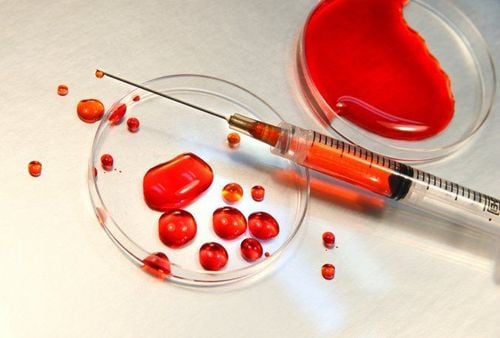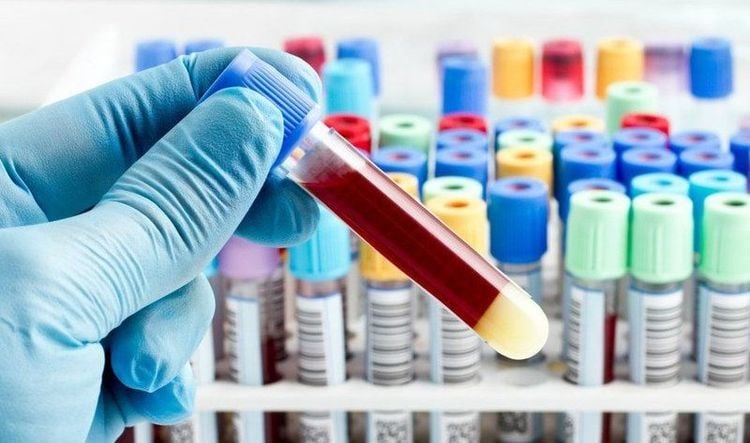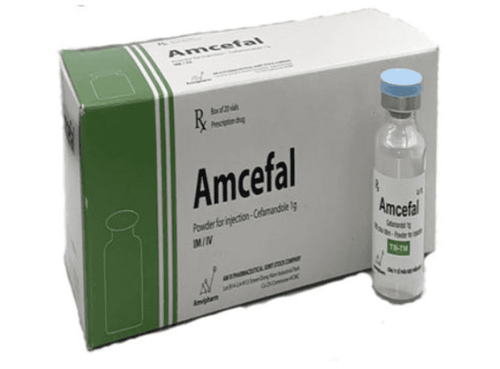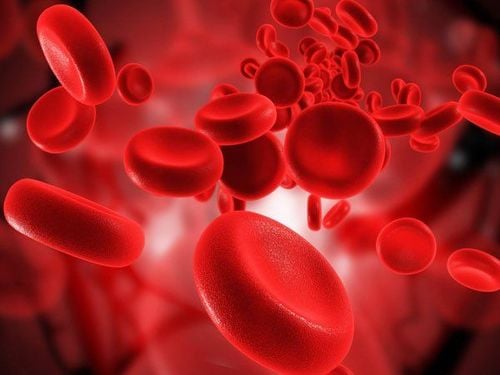This is an automatically translated article.
The article was written by Assoc. Prof. TS.BS Le Ngoc Hung - Head of Laboratory Department, Laboratory Department - Vinmec Central Park International General HospitalSepsis is a clinical syndrome resulting from an overactive immune response to the presence of bacteria in the blood, and the bacteria have not been destroyed or eliminated by the body's defenses. Bacteremia does not cause any clinical signs or symptoms.
1. What is a blood culture?
A blood culture is a test that checks for the presence of foreign agents such as bacteria, fungi and other microorganisms in your blood. The presence of these pathogens in the blood can be a sign of bacteremia. A positive blood culture means you have bacteria present in your blood.
Bacteremia is different from sepsis-septicemia. Sepsis is a clinical syndrome resulting from an overactive immune response to the presence of bacteria in the blood, and the bacteria have not been destroyed or eliminated by the body's defenses. Bacteremia does not cause any clinical signs or symptoms.
Bacteria from the skin, lungs, gastrointestinal tract, urinary tract are common sources of sepsis.
A blood culture test is simply taking a blood sample. The laboratory tests the blood sample and sends the results to the doctor, who uses the result information to determine the necessary measures to treat the blood infection.
2. Purpose of blood culture
Blood cultures are indicated when your doctor suspects you have bacteremia/sepsis. It is necessary to test for bacteriophage because it can lead to many important complications. One of the complications of bacteremia is sepsis.
In sepsis, the pathogen causing the blood infection reacts to your body's resistance and prevents your immune system from working properly. Pathological agents can also create toxins that damage your organs.
Blood culture results help your doctor identify the specific agent or bacteria that causes sepsis and the best way to treat it.

Cấy máu được chỉ định khi bác sĩ nghi ngờ bạn bị du khuẩn máu/nhiễm trùng huyết
3. Symptoms of blood bacteria and sepsis
You need to see a doctor immediately if you have symptoms of bacteremia. These include:
Chills High or moderate fever Rapid breathing Increased heart rate or palpitations Excessive fatigue Muscle aches Severe headaches If not treated, the blood bacteria can progress to the most active, sepsis. Symptoms of sepsis include those of the blood bacteria mentioned above, as well as signs of organ damage. Here are additional symptoms of sepsis :
Confusion Less urine Dizziness Nausea, vomiting Flaky skin As the disease progresses, more dangerous complications of sepsis develop. Includes:
Systemic inflammatory response Creation of small clotting points in small vascular systems Dangerous hypotension One or more organ failure
4. Risk factors for bacteremia
Blood cultures are routinely performed in subjects at high risk for bacteremia. You are at high risk if you have been diagnosed with: Diabetes, HIV or AIDS, cancer, autoimmune disease.
The following situations also put you at risk of sepsis:
You have recently had an infection. You have just had surgery. You have just had an artificial heart valve inserted. You are on immunosuppressive treatment. Blood cultures are also commonly performed in infants and children with fever may have an infection but not yet have symptoms of sepsis.

Cấy máu cũng thường được thực hiện trên nhũ nhi và trẻ em bị sốt có thể có một nhiễm trùng
5. Blood cultures in other circumstances
Blood cultures are used to confirm specific conditions such as endocarditis. Endocarditis is a condition that occurs when bacteria in your blood attach to the valves of your heart. This disease is life-threatening.
6. Risks of blood culture test
Complications may occur only when you get a blood sample. However, blood sampling is routine and rarely causes serious complications. Complications of blood sampling: bleeding in the skin/or hemangioma; faint; infection.
7. How are blood cultures done?
Blood sampling for blood cultures is usually done in hospitals, emergency departments, or specialized clinical departments. Blood cultures are rarely performed on an outpatient basis.
Initially, your skin is cleaned to prevent any bacteria on your skin that could contaminate the test. The nurse will then wrap your arm with an elastic band that allows your veins to swell and become visible. Then, with a needle, blood samples will be drawn from your arm.
Multiple blood samples are often taken from different venous sites which increases the chances of detecting bacteria or fungi in the blood and helps to define sepsis with certainty. If you're an adult, your doctor usually takes 2-3 blood samples, often at different times.
Rule of blood culture before the patient is on systemic antibiotics. However, in cases where the patient is being treated with antibiotics but the symptoms of bacteremia or sepsis still do not improve, the doctor also prescribes a blood culture.
The best time to do a blood culture is when the patient has chills or is shivering before the fever, or when the patient is having a fever... Usually 2 blood cultures are done within the first hour and done. blood cultures at 2 different blood collection sites on the body (for example, the first time blood is drawn from the right hand, the next time blood is drawn from the left hand).
After the blood sample is taken, the nurse will place a gauze pad over the injection site and a bandage. The blood sample is then transferred to the Laboratory where the blood culture is performed: each blood sample is placed in a vial containing a solution called a culture. The culture stimulates the bacteria, if present in the blood, to grow.

Thời điểm tốt nhất để cấy máu là khi bệnh nhân bị ớn lạnh hay đang lạnh run trước khi sốt
8. What do blood culture results show?
If two or more of your cultures are positive for the same bacteria or fungi, you almost certainly have sepsis caused by these agents.
If only 1 blood culture result is positive, other results are negative, you may also have sepsis. But it's also possible that your blood sample is contaminated by bacteria on your skin. Your doctor will order more tests to be sure.
If the blood culture is positive, it means you have a bacterial or fungal infection in your blood. The test results help your doctor identify the bacteria or fungi that are causing the infection.
If all blood culture tests are negative, you have a high chance of not having bacteremia. If your clinical symptoms persist, your doctor will review and add other supportive diagnoses and tests.
Remember that blood cultures do not detect viral infections. If your doctor suspects you have a viral infection, appropriate tests will be done.
Depending on the type of bacteria detected in the blood, the doctor will perform an additional sensitivity test. This test identifies well-specific drugs against bacteria. In standard practice, sensitivity testing is performed immediately following a positive blood culture test.
9. After blood culture
If your doctor suspects you have bacteremia, treatment with intravenous broad-spectrum antibiotics can be started immediately. This antibiotic works on a wide range of bacteria while you wait for the results of your blood culture and susceptibility test results.
Bacteremia requires immediate treatment, usually in a hospital. The disease can turn into advanced sepsis, which can be life-threatening, especially if you are immunocompromised. If you have sepsis, you need to be hospitalized right away for complete treatment.
Bacteremia can lead to many important complications. Tell your doctor if you are at risk or have any symptoms of bacteremia/sepsis. Any fever that persists for more than 3 days should always be evaluated by a physician. If a child younger than 3 months old has a fever, it must be seen by a doctor immediately.
Vinmec International General Hospital is one of the hospitals that not only ensures professional quality with a team of leading medical doctors, modern equipment and technology, but also stands out for its examination and consultation services. comprehensive and professional medical consultation and treatment; civilized, polite, safe and sterile medical examination and treatment space. Customers when choosing to perform tests here can be completely assured of the accuracy of test results.
Customers can directly go to Vinmec Health system nationwide to visit or contact the hotline here for support.
SEE ALSO:
Blood infection: Causes and symptoms Blood culture for bacteria in blood sugar infections What is blood culture and in what cases is it indicated?













